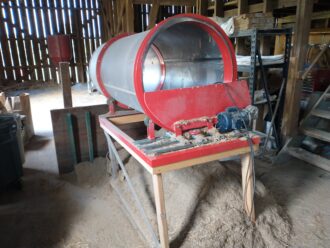In Pennsylvania, switchgrass has emerged as a promising new crop for family farms. This perennial grass thrives on rocky, untillable land, requires minimal maintenance and reduces soil erosion. But a key challenge to expanding production has been the lack of stable markets and cost-effective methods of processing switchgrass for high-value applications like poultry bedding.
In response, Will Brandau built a robust network of farmers in the state to help producers develop and adapt to evolving switchgrass markets. With support from Northeast SARE, members of the Association of Warm Season Grass Producers developed portable processing equipment to produce high-quality poultry bedding from switchgrass that is less than 1.5 inches in length and virtually dust-free.
This work builds on a series of SARE-funded initiatives to promote warm-season grasses, highlighting their potential as low-input, sustainable crops. The association’s efforts, supported by additional grants, have expanded knowledge of switchgrass’s diverse uses, including erosion-control materials, cattle bedding, and more.
The project has improved the economic and social sustainability of agriculture in Pennsylvania through producer-driven networking, research, and market development. A recent post-project evaluation of SARE projects awarded between 2016–2019 emphasized the importance of investing in producer leadership to engage farmers to build new markets and processing options for a low maintenance, soil conserving crop.
“We had these guys experimenting with different processes on how to produce poultry bedding. We took all the things that worked and put them together on one device that was portable so it could go from farm to farm,” said Brandau.
Visit https://www.sare.org/sare-impacts-FNE17-865 for more information on this project’s impact.
Single-Producer-Scale Preparation of Warm-Season Grass for Poultry Bedding – Pennsylvania is part of a series produced by Insight for Action as part of a post-project evaluation of SARE's regional grant programs. For more information visit https://www.sare.org/sare-impacts.
For information on grants and resources available from SARE, visit www.sare.org.
